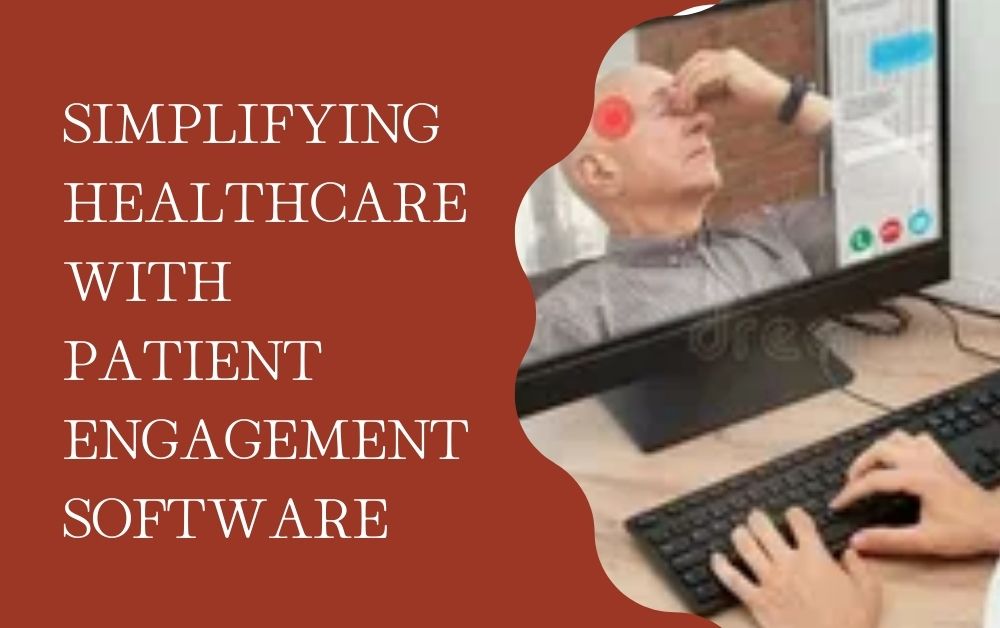Revolutionizing Healthcare with Technology
Technology has changed almost every area of our lives in the fast-paced world we live in today, and healthcare is no exception. Patient engagement software is one of the most significant advances in healthcare technology. This new tool is transforming the way patients communicate with healthcare practitioners, allowing them to take greater control of their health than ever before.
Understanding Patient Engagement Software
Patient engagement software is a digital platform designed to enhance communication and collaboration between patients and healthcare providers. It offers a range of features and functionalities aimed at improving patient education, streamlining administrative tasks, and fostering a more personalized healthcare experience.
How Patient Engagement Software Works
At its core, patient engagement software functions as a bridge between patients and healthcare providers, facilitating seamless communication and information sharing. Through secure online portals and mobile applications, patients can access their medical records, schedule appointments, receive appointment reminders, and communicate with their healthcare team.
The Benefits of Patient Engagement Software
- Improved Communication: Patient engagement software facilitates real-time communication between patients and healthcare providers, enabling faster response times and more effective care coordination.
- Enhanced Patient Education: By providing access to educational resources and personalized health information, patient engagement software empowers patients to make informed decisions about their health and wellness.
- Streamlined Administrative Processes: From appointment scheduling to billing and payment processing, patient engagement software automates and streamlines many administrative tasks, reducing paperwork and freeing up valuable time for healthcare providers.
- Increased Patient Satisfaction: By offering convenient access to healthcare services and information, patient engagement software helps improve patient satisfaction and loyalty.
The Role of Patient Engagement Software in Modern Healthcare
In an era where patient-centered care is increasingly emphasized, patient engagement software plays a vital role in supporting this paradigm shift. By putting patients at the center of the healthcare experience, this technology helps drive better outcomes, improve patient satisfaction, and reduce healthcare costs.
Empowering Patients
Patient engagement software empowers patients to take an active role in their healthcare journey. By providing access to their medical information, educational resources, and communication tools, patients can become more informed and engaged participants in their own care.
Improving Care Coordination
Effective communication and collaboration are essential for delivering high-quality healthcare. Patient engagement software facilitates better care coordination by enabling seamless communication between patients, caregivers, and healthcare providers across different settings and specialties.
Enhancing Preventive Care
Preventive care is key to promoting better health outcomes and reducing the burden of chronic disease. Patient engagement software supports preventive care efforts by facilitating regular communication, health monitoring, and early intervention strategies.
Overcoming Challenges and Driving Adoption
While patient engagement software offers numerous benefits, its widespread adoption still faces some challenges. These may include concerns about data privacy and security, interoperability issues, and resistance to change within healthcare organizations. However, as the healthcare industry continues to evolve, the need for patient engagement solutions will only grow, driving greater adoption and innovation in this space.
Addressing Privacy and Security Concerns
To address privacy and security concerns, patient engagement software providers employ robust security measures, such as encryption, access controls, and compliance with healthcare regulations like HIPAA. By prioritizing data security and privacy, these platforms help build trust and confidence among patients and healthcare providers.
Improving Interoperability
Interoperability remains a significant challenge in healthcare, as disparate systems and technologies often hinder seamless data exchange and communication. Patient engagement software providers are working to improve interoperability by adopting standardized data formats and interfaces, as well as integrating with electronic health record (EHR) systems and other healthcare IT solutions.
Driving Cultural Change
Driving cultural change within healthcare organizations is essential for the successful adoption of patient engagement software. This may involve educating healthcare providers and staff about the benefits of patient engagement, addressing concerns and resistance to change, and fostering a culture of collaboration and innovation.
Conclusion: The Future of Healthcare Engagement
As technology continues to advance and consumer expectations evolve, patient engagement software will play an increasingly critical role in shaping the future of healthcare. By empowering patients, improving care coordination, and driving preventive care efforts, these innovative solutions have the potential to transform the healthcare landscape and improve outcomes for patients around the world. As we embrace the opportunities and challenges of this digital revolution, patient engagement software will remain at the forefront of innovation, driving positive change and delivering value to patients, providers, and healthcare organizations alike.
NOTE : For more insightful articles related to this topic, feel free to visit logicallyblogs

